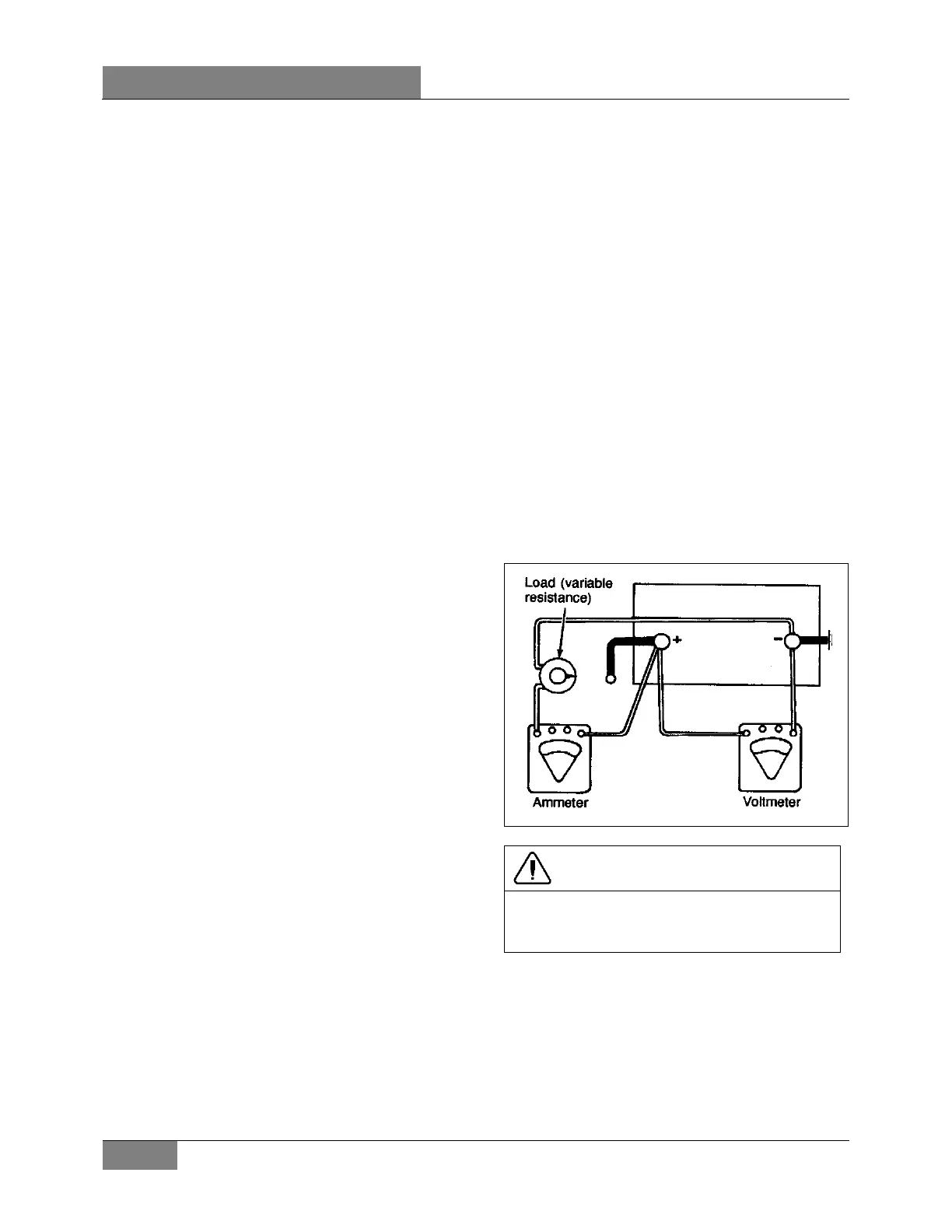SECTION 06B: X3 SERIES ELECTRICAL
56
PA1621 Maintenance Manual All Series | Jul 2017
5.6 BATTERY RATING
Each of the 12 volt batteries used on the vehicle
has the following rating:
AGM batteries (PRIME):
Reserve capacity: 200 minutes
Cold cranking (amps): 800 @ 0
o
F (-18
o
C)
Weight (filled): 69 lb (26,7 kg)
The reserve capacity is defined as the number
of minutes a new, fully charged battery at 80
o
F
(26,6
o
C) can be discharged at 25 amperes and
maintain a minimum of 1.75 volts per cell (10.5
volts total for one 12 volts battery). This rating
can be used as a basis for determining how long
a vehicle might run after an alternator failure.
The cold cranking rating is defined as the
minimum discharge current a battery will deliver
in amperes for 30 seconds at 0
o
F (-18
o
C) while
maintaining a minimum of 1.2 volts per cell (7.2
volts total for one 12 volts battery). This rating
can be used as a basis for comparing starting
performance.
5.7 BATTERY TESTING
Several factors influence battery performance.
The methods and inspection procedures
proposed here will ensure your batteries are in
good shape.
5.7.1 Visual Inspection
1. Check the outside of the battery for a broken
or cracked cover or case that could permit
loss of electrolyte. If obvious physical
damage is noted, replace the battery. If the
battery is bulged, replace the battery. Also
check for wet areas around the terminals.
2. Check for loose terminal posts, cable
connections, damaged cables, and for
evidence of corrosion. Correct conditions as
required before proceeding with tests.
3. Check for damaged or loose battery tie-
downs.
5.7.2 Removing Surface Charge
Disconnect cables from the battery and attach
alligator clamps to the contact lead pad on the
battery as shown in Figure 44. Connect a load
equal to half the CCA across the terminal for 5
seconds to remove surface charge from the
battery.
5.7.3 Load Test
This test is one means of checking the battery to
determine its ability to function as required in the
vehicle.
To make this test, use test equipment that will
withstand a heavy electrical load from the
battery, such as a carbon pile resistor along with
an ammeter and volt meter (Figure 43). A
charging system analyzer test equipment may
also be used.
1. Connect a voltmeter, ammeter, and a
variable load resistance as illustrated in
Figure 43.
06064
FIGURE 43: LOAD TEST
CAUTION
Observe polarity of the meters and the battery
when making connections, and select the
correct meter range.
2. Apply a load equal to half the CCA rating @
0
o
F for 15 seconds.
3. With an ammeter reading specified load,
read voltage. The voltage should be at least
9.6 volts. Disconnect the load. If the
voltmeter indicates 9.6 volts or more, the
battery is good. If the voltmeter reading is
less than 9.6 volts, replace the battery. This
voltage is to be used for battery ambient

